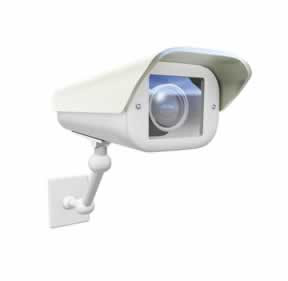 According to the President and CEO of Axis Communications Ray Mauritsson, "The next few years will see a continuing switch from analog to digital surveillance cameras, and to the increased use of processing power built into individual cameras."
According to the President and CEO of Axis Communications Ray Mauritsson, "The next few years will see a continuing switch from analog to digital surveillance cameras, and to the increased use of processing power built into individual cameras."Mauritsson, speaking at the official opening of Axis' Melbourne office, stated that Axis would continue to take advantage of the processing power of its custom-designed ASICs in order to deliver features as opposed to just image resolution. One example that Mauritsson brought up was that parts of new algorithms for video analytics will be put into security cameras in order to improve scalability, with other parts remaining centralized.
Axis' recently released Q1602 features the company's Lightfinder technology, which allows algorithms built into the ASIC to compensate for the characteristics of the camera's lens and image sensor. This allows you to receive improved image quality, even in low light situations, and performs better than the human eye in near darkness.
Approximately 2/3 of the of the surveillance camera market is still analog according to Mauritsson. However, the shift to digital/IP cameras is moving along quickly. Year-over-year growth is roughly 10% overall though it is around 30% for digital cameras. Mauritsson predicts that the market penetration of IP cameras will be around 90% to 95% by the year 2020.
In addition to that, Mauritsson also believes that the deployment of the NBN will probably see the emergence of video surveillance as a service as well as the outsourcing of video monitoring and storage to cloud providers. This, according to Mauritsson, will be especially useful to small sites with only 5 to 10 cameras.
Image quality is one of the main factors that is helping drive the transition to digital security cameras. Analog cameras are limited to PAL/NTSC standards but digital cameras are capable of displaying images in full 1080p HD. In addition to that, another factor is the seemingly low cost of installation.
Power over Ethernet (PoE) allows you to use a single cable to connect an IP camera. An analog camera needs at least one cable to power it and another cable to run the video signal. Other things, like PTZ functionality, audio and control functions add to the cabling as well as the complexity of the installation.
However, Mauritsson believes that the transition to digital cameras is being delayed by systems integrators that prefer to stay in their old analog ways due to comfort and familiarity. Mauritsson expects big things from the future of security cameras, even though the process of getting there is slow going.
Source: IT Wire - What's ahead for the surveillance camera market?
 Find out what is going on in the
Find out what is going on in the
No comments:
Post a Comment